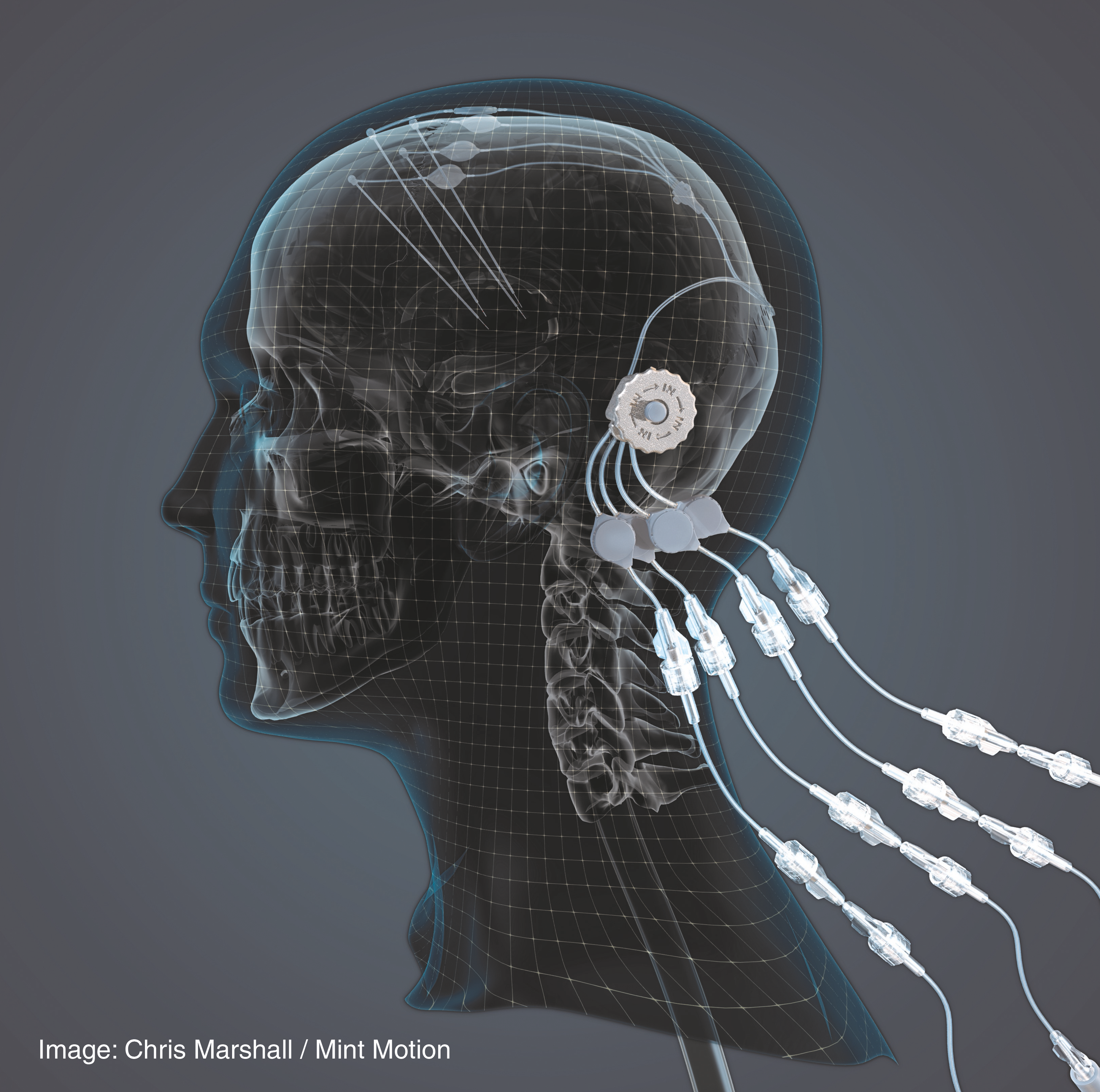
UK additive manufacturing (AM) company Renishaw has built a 3D printed device that makes it easier to deliver a new drug into cells.
The AM titanium port enabled the precise delivery of a new drug candidate, Glial Cell Line Derived Neurotrophic Factor (GDNF) into the dying dopamine brain cells of people with Parkinson's to improve their symptoms.
During a trial, 42 patients had the device embedded into their skull through which GDNF could be delivered via micro-catheters to the putamen, a region of the brain for motor function. The device was implanted using the company’s neuromate surgical robot, which positions four catheters into the brain.
‘This is a significant breakthrough in our ability to treat neurological conditions, such as Parkinson's because most drugs that might work cannot cross from the bloodstream into the brain due to a natural protective barrier,’ said chief neurosurgeon Professor Steven Gill. ‘I believe that this approach could be the first neuro-restorative treatment for people living with Parkinson's which is, of course, an extremely exciting prospect.’
The findings of the trials can be found in the journal Brain and the Journal of Parkinson's disease.
This story is adapted from material from Renishaw, with editorial changes made by Materials Today. The views expressed in this article do not necessarily represent those of Elsevier.






